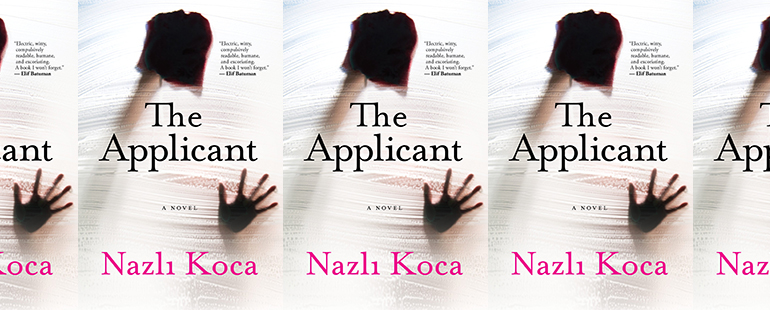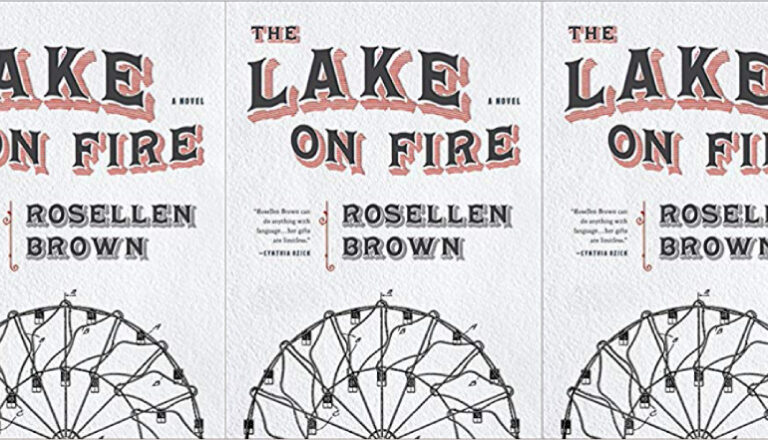Constant Contradictions in Nazlı Koca’s The Applicant

The Applicant
Nazlı Koca
Grove Press | February 14, 2023
One part künstlerroman, one part kaleidoscope, The Applicant, the debut novel by Turkish-born/US based writer Nazlı Koca, is a frenetic tear through a cosmopolitan world of all-night techno and ketamine-fueled encounters, as well as an introspective meditation on the infinite absurdities that constrain the possibilities of autonomy and creativity in the early twenty-first century. With its clipped, direct sentences and its abundance of resonant questions, long and short, Koca’s prose mirrors this narrative doubleness—giving readers an experience that is both irresistibly consumable yet compellingly durable.
The Applicant’s opening sentences introduce Leyla, a mid-twenties Turkish dispatriate with a negative bank balance and a growing soap opera addiction whose “status is complicated.” Embroiled in legal appeals concerning her failed thesis and revoked student visa, she takes a part-time job as a cleaner, or Putzi, at a Berlin hostel—where youthful transients of leisure and pedigree briefly entangle their lives with those of less fortunate birth and status, “the bottom of the immigrant hierarchy,” the ones with less luck, bad luck, or, in many cases, no luck at all. It’s all quite through the looking glass—which, conveniently enough, is the hostel’s name and inconsistent design theme, a misspelled “we’re all med heir” mural on one wall and two free beers for Putzis at the end of each shift.
Who is Leyla? In one version of her imagination, Leyla is “a Turkish runaway in her twenties who came to Berlin to be free but can’t bring herself to write a book that would expose the world for what it is.” In other versions, she oscillates between a nihilistic devotee of the underground, devouring art and drugs with equal abandon, and a begrudgingly obligate daughter who returns her mother’s phone calls even amidst a dinner party thrown in her honor. At once the fallen ingénue and the hedonistic fuck-up, Layla diligently collects “treasures of the day”—bottles of liquor, loose change, a copy of My Brilliant Friend—left behind by those who vacate the rooms she cleans, all while pondering her inability (or unwillingness) to posture herself as “the perfect student or a poor refugee,” the two stock character types that seem to offer someone like her both the access and the solitude she desires. “Why,” she wonders Woolf-like, “can’t I have one room in Kreuzberg to watch soaps and contemplate writing in without having to choose between my conscience and asylum, my ideals and academia, my family in Turkey and freedom here?”
All these versions are contained, just barely, in Leyla’s diary—an orange notebook she discovers one day underneath a couch. “Someone must’ve forgotten it in my room,” she declares, “because I don’t remember buying it at all.” For much of the novel, Koca lets us play the intimate role of voyeur, accessing both surface and depth of Leyla’s disorientingly fantastic world as an assortment of downwardly mobile and idealistically aspirational figures traverse these private pages. Her accounts are romantic—but not naïve. “I’m still in love with this filthy city,” she writes, “but now I know that Berlin’s love isn’t free.” Imagine, after all, how Hemingway might have written Paris’s “moveable feast” if his yellow-gloved hands had scrubbed toilets all day before visiting Gertrude Stein. These are days and nights of constant contradiction—of Dom Perignon and no rent, of Instagram influencers posting glamourous shots of London from their childhood bedrooms in rural Poland, and of the “thirty-three-year-old Swedish right-wing conservative tourist” who promises (or threatens) to disrupt Leyla’s precarious existence once again.
As readers, we’re also offered access to those things that, for all her self-disclosure, Leyla doesn’t willingly reveal to those around her—haunting memories of her father, accounts of her frequent and vivid dreams, and the ceaseless, repressed anger at both the circumstances (so many) that have brought her here and at the people that could help her but who, for some reason, or for no reason at all, don’t. Time and again, these revelations seem to promise a moment of clarity, only to have it snatched away, leaving us just as perplexed as their creator. “Will I ever feel free?” she wonders. “I’m always afraid of something.” What kind of a narrative is this?
Yet even Leyla’s diary can’t quite determine what it is—or what it’s meant to be. At first, it appears as a self-induced distraction from her desire, thwarted in ways both internal and external, to be a public voice—until the moment when she rereads some of the pages and notes that “it looks like I’ve been writing to be read by others” all along. Later, when she begins to share her “life in fragments” more openly, transcribing them in a document she saves to her laptop as “The Applicant,” she’s asked, “Is this really your diary or a writing project?”—to which she responds, “I told her I didn’t know anymore.” In this sense, Koca’s (or Leyla’s) questions return our attention with indeterminate silence. Did we, can we, could we really know Leyla? Is it, as another character inquires, “all real”? Maybe. What’s fiction?
For all the novel’s universal resonance, there remains much to be said about the particulars of Leyla’s identity. In referencing the bureaucratic struggles that punctuate the narrative, Koca’s title echoes the well-known poem by Sylvia Plath and the suspicious tone—the subtext of every immigration-related question—of its opening line: “First, are you our sort of a person?” As I read, however, another of Plath’s iconic images appeared to me: Esther Greenwood’s fig tree from The Bell Jar. In this famous passage, Esther, paralyzed by the prospect of choosing her future from among various options, each potential path represented by a different fig, watches instead as “the figs began to wrinkle and go black, and one by one, they plopped to the ground at my feet.” This has been and will continue to be a powerful metaphor for so many. As American readers, however, and perhaps more generally as Western readers, we don’t talk enough about Esther’s underlying assumption—all the figs are ripe, and all her potential futures are, as she says, “wonderful.”
There is a different dilemma, though, when, like Leyla, because of something like the mere fact of the place and time you were born, you doubt the possibility that the figs were ever ripe, that any potential futures are wonderful. Instead, you consider that some are only less bad, less rotten, less spoiled than others. “One euro is worth about 5 Turkish liras today,” Leyla writes in 2017. In 2023, the answer is now “about 20.” For those who come to Koca’s work from such realities, I expect that Leyla’s story will propose its own set of readings, responses, and potential remedies—but I leave it to them and to the students I see every day to discover, in their own time and in their own ways, what they might be.


